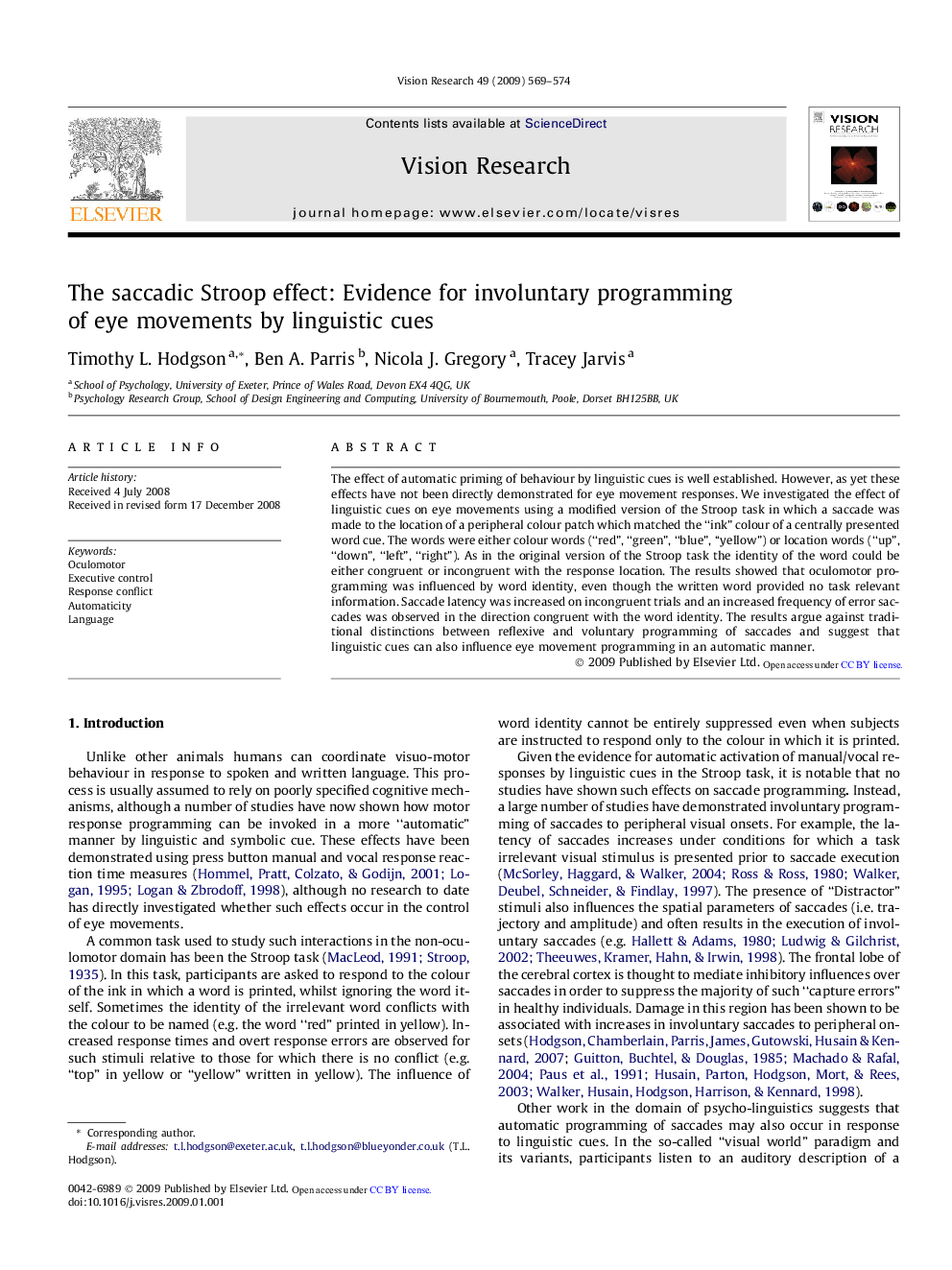| Article ID | Journal | Published Year | Pages | File Type |
|---|---|---|---|---|
| 6203930 | Vision Research | 2009 | 6 Pages |
The effect of automatic priming of behaviour by linguistic cues is well established. However, as yet these effects have not been directly demonstrated for eye movement responses. We investigated the effect of linguistic cues on eye movements using a modified version of the Stroop task in which a saccade was made to the location of a peripheral colour patch which matched the “ink” colour of a centrally presented word cue. The words were either colour words (“red”, “green”, “blue”, “yellow”) or location words (“up”, “down”, “left”, “right”). As in the original version of the Stroop task the identity of the word could be either congruent or incongruent with the response location. The results showed that oculomotor programming was influenced by word identity, even though the written word provided no task relevant information. Saccade latency was increased on incongruent trials and an increased frequency of error saccades was observed in the direction congruent with the word identity. The results argue against traditional distinctions between reflexive and voluntary programming of saccades and suggest that linguistic cues can also influence eye movement programming in an automatic manner.
